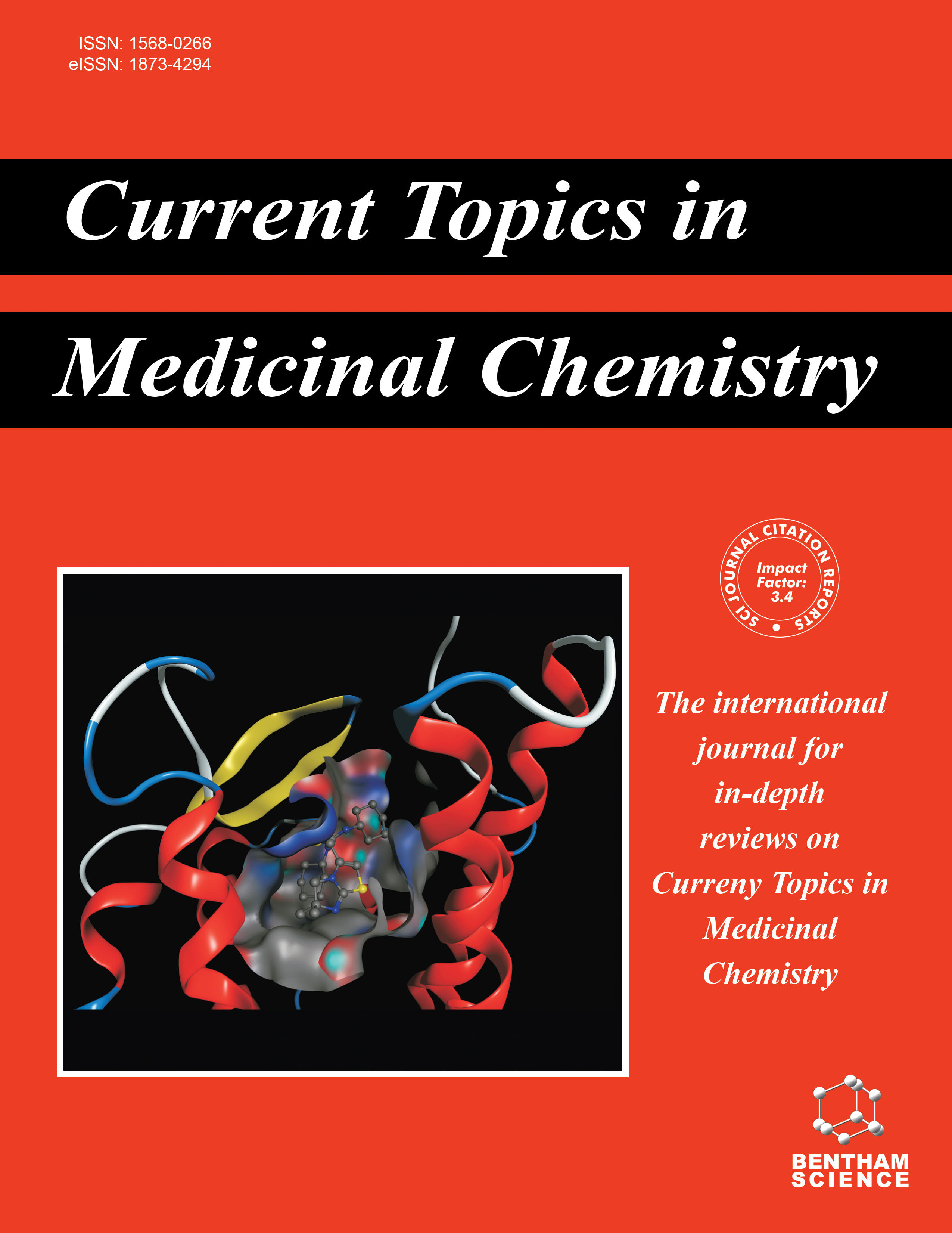- Home
- A-Z Publications
- Current Topics in Medicinal Chemistry
- Previous Issues
- Volume 23, Issue 22, 2023
Current Topics in Medicinal Chemistry - Volume 23, Issue 22, 2023
Volume 23, Issue 22, 2023
-
-
Pyrazole; A Privileged Scaffold of Medicinal Chemistry: A Comprehensive Review
More LessAuthors: Ram Kumar, Raksha Sharma and Dinesh K. SharmaPyrazole is considered an important active scaffold that possesses various types of pharmacological activities. The overwhelming literature reported earlier reflects the immense biological potential of pyrazole derivatives. The presence of this moiety in various FDA-approved drugs, including celecoxib (anti-inflammatory), apixaban (anticoagulant), rimonabant (anti-obesity), difenamizole (analgesic), and sildenafil (for Read More
-
-
-
Current Fragment-to-lead Approaches Starting from the 7-azaindole: The Pharmacological Versatility of a Privileged Molecular Fragment
More LessAuthors: Leandro Marcos Santos and Nelson José F. da SilveiraFragment-based drug discovery is one of the most powerful paradigms in the recent context of medicinal chemistry and is being widely practiced by academic and industrial researchers. Currently, azaindoles are among the most exploited molecular fragments in pharmaceutical innovation projects inspired by fragment-to-lead strategies. The 7-azaindole is the most prominent representative within this remarkable family of Read More
-
-
-
The Role of Shear Stress in Coronary Artery Disease
More LessCoronary artery disease is the leading cause of morbidity and mortality worldwide, especially in developed countries, with an increasing incidence in developing countries. Despite the advances in cardiology, there are yet many unanswered questions about the natural history of coronary atherosclerosis. However, it has not been fully explained why some coronary artery plaques remain quiescent over time, whereas other Read More
-
-
-
Oxidative Stress Biomarkers in Coronary Artery Disease
More LessOxidative stress plays a central role in atherogenesis, implicated in endothelial dysfunction, coronary plaque formation, and destabilization. Therefore, identifying oxidative stress in the vascular wall by reliable biomarkers could aid in early diagnosis and better coronary artery disease (CAD) prognostication. Because of the short half-life of reactive oxygen species, the current approach is to measure stable products gen Read More
-
-
-
Interleukin-6 Signaling in Atherosclerosis: From Molecular Mechanisms To Clinical Outcomes
More LessInterleukin-6 (IL-6) is a cytokine centrally involved in several immune responses and it has been recognized as a driver of enhanced atherothrombotic risk. Immunity and inflammation are intrinsically involved in atherosclerosis progression. This generated ‘inflammation hypothesis’, which is now validated in large-scale clinical trials. Abundant evidence supports the distinctive role of IL-6 in coronary artery Read More
-
Volumes & issues
-
Volume 25 (2025)
-
Volume 24 (2024)
-
Volume 23 (2023)
-
Volume 22 (2022)
-
Volume 21 (2021)
-
Volume 20 (2020)
-
Volume 19 (2019)
-
Volume 18 (2018)
-
Volume 17 (2017)
-
Volume 16 (2016)
-
Volume 15 (2015)
-
Volume 14 (2014)
-
Volume 13 (2013)
-
Volume 12 (2012)
-
Volume 11 (2011)
-
Volume 10 (2010)
-
Volume 9 (2009)
-
Volume 8 (2008)
-
Volume 7 (2007)
-
Volume 6 (2006)
-
Volume 5 (2005)
-
Volume 4 (2004)
-
Volume 3 (2003)
-
Volume 2 (2002)
-
Volume 1 (2001)
Most Read This Month
Article
content/journals/ctmc
Journal
10
5
false
en


